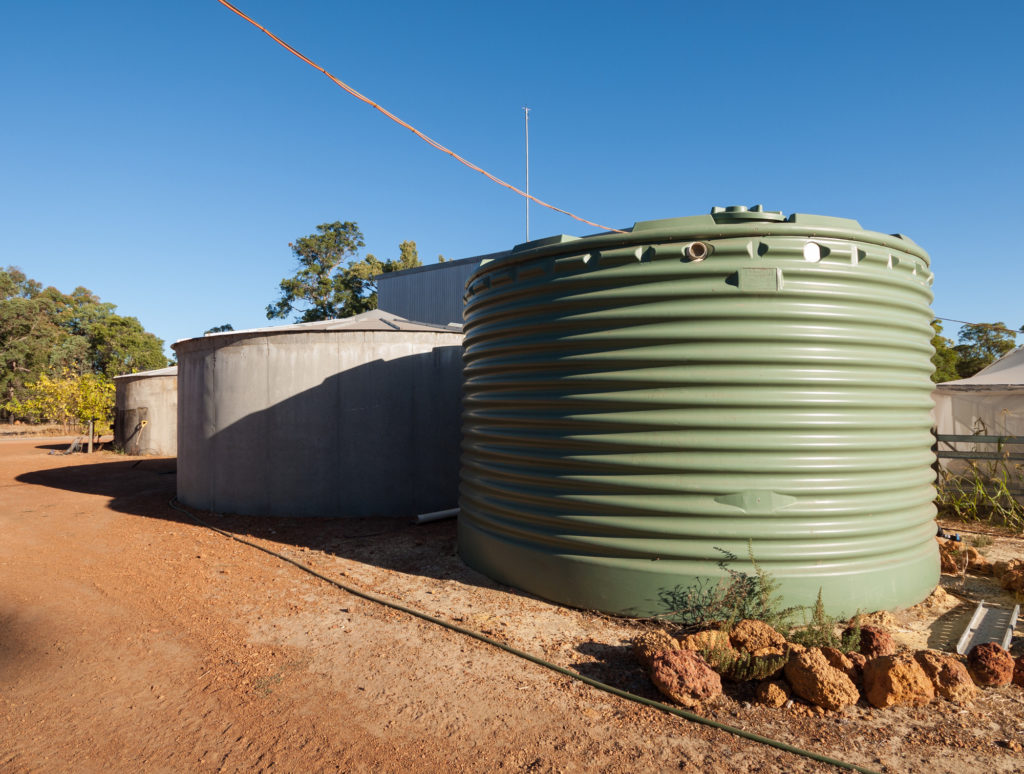A rainwater collection system can help individuals and communities become more sustainable. Here’s the equipment you need to invest in to get started.
“When in ancient Rome!”
That’s what they say, right? Well, when you’re discussing rainwater collection, this phrase applies!
The Roman Empire perfected their rainwater collection system by creating state of the art technology to achieve prosperity and sustainability. Believe it or not, there is even a rainwater collection system that you can sail a boat in! Now, that’s dedication!
While ancient people collected rain out of necessity and for survival, modern rain collectors are looking to lower energy bills and be more eco-friendly by recycling rainwater.
You don’t need to dig a hole large enough to sail a boat, but there are supplies that you need to begin harvesting rainwater to use for non-drinking purposes such as watering a garden.
Before you start collecting rainwater, make sure that rainwater harvesting is legal in your state and that you follow any regulations in place.
Read on to learn what equipment is needed for a rainwater collection system!
Supplies Needed for Your Rainwater Collection System
1. Collection Receptacle
Every rainwater collection system needs a storage receptacle. The most popular and effective way to store rainwater is in rain barrels or water storage tanks.
Rain barrels store less water and work well for the common household. Whereas, water storage tanks are great for industrial and long-term sustainability purposes.
But, if you want to collect more rainwater and if it’s legal to do so then a water storage tank may be a great option to pursue. You can purchase water storage tanks and rain barrels online, or you can make DIY version of a rain barrel collection system at home.
Make sure to use the proper material when attempting to make a rain barrel collection receptacle on your own. Some materials are safer than others and provide better results.
2. Transportation Equipment
In order to collect a vast amount of rainwater, it is essential that you have a method of transportation in place for where the rainwater is gathering to the storage unit. Many people use their roofs as a gathering locale and then redirect the rainwater to a storage tank with transportation equipment.
Transportation equipment works just like a gutter system, but instead of simply removing the water from the roof and onto the ground, it is stored in a water collection tank or rain barrel.
Use the lowest downspout from your existing gutter system and attach it or place it near the top of your rain barrel or water storage tank. A tarp or PVC pipe can also be used to transport rainwater into your storage receptacle.
3. Spigot and Hose
You will also need a spigot to release the rainwater from the storage unit and a hose to direct water for usage. The spigot should be near the bottom of the storage unit.
Make sure to match the size of the spigot with the hose in order to operate your new rain collection system properly. If you are purchasing a pre-made rain barrel or water storage tank, these items should be included.
4. Optional Equipment
Depending on the method you use for harvesting rainwater, you may need extra equipment. Check with the manufacturer of your equipment to see if any additional equipment is needed or suggested for optimal use.
If you are creating a DIY rainwater collection system, do proper research to ensure that you have all the necessary equipment, tools, and products for a successful operation.
Rainwater Collection Systems: An Eco-Friendly and Budget Friendly Lifestyle
Rainwater collection isn’t the only way to enhance your lifestyle and improve your quality of life. Visit our lifestyle blog to learn more about tips and tricks for improving your daily life!







